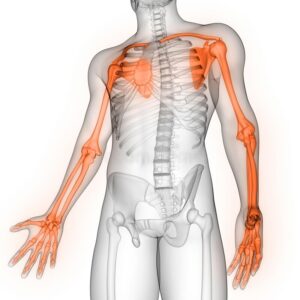Upper Extremity Joints
To see a Hand/Wrist Specialist in Dallas/Fort Worth, schedule an appointment today!

What Joints are considered Upper Extremity?
Upper extremity joints refer to the joints located in the upper limb, which includes the shoulder, elbow, wrist, and hand. Moreover, these joints allow for a wide range of movements. This enables activities such as reaching, grasping, and manipulating objects. Here is a brief overview of the upper extremity joints:
- Shoulder joint: The shoulder joint acts as a ball-and-socket joint formed by the head of the humerus and the glenoid cavity of the scapula. Additionally, it allows for a wide range of motion, including flexion, extension, abduction, adduction, rotation, and circumduction.
- Elbow joint: The elbow joint acts as a hinge joint formed by the articulation of the humerus, radius, and ulna bones. For example, it enables flexion and extension movements, allowing for the bending and straightening of the arm.
- Wrist joint: The wrist joint forms a complex joint formed by multiple small bones in the hand (carpal bones) and the radius and ulna bones of the forearm. Furthermore, it facilitates various movements, including flexion, extension, radial deviation, ulnar deviation, and limited degrees of rotation.
- Hand joints: The hand consists of multiple joints that enable intricate movements for gripping, manipulating objects, and performing fine motor tasks. For example, these include the metacarpophalangeal joints (MCP joints) at the base of the fingers and the proximal interphalangeal joints (PIP joints) in the middle of the fingers. Lastly, the distal interphalangeal joints (DIP joints) at the fingertips.
Conclusion
The upper extremity joints work together to provide stability, mobility, and dexterity to the arm and hand. Additionally, they are vital for carrying out daily activities, sports, and occupational tasks. However, if you experience any pain, stiffness, or limitations in the upper extremity joints, it is advisable to seek medical evaluation for an accurate diagnosis and appropriate treatment

